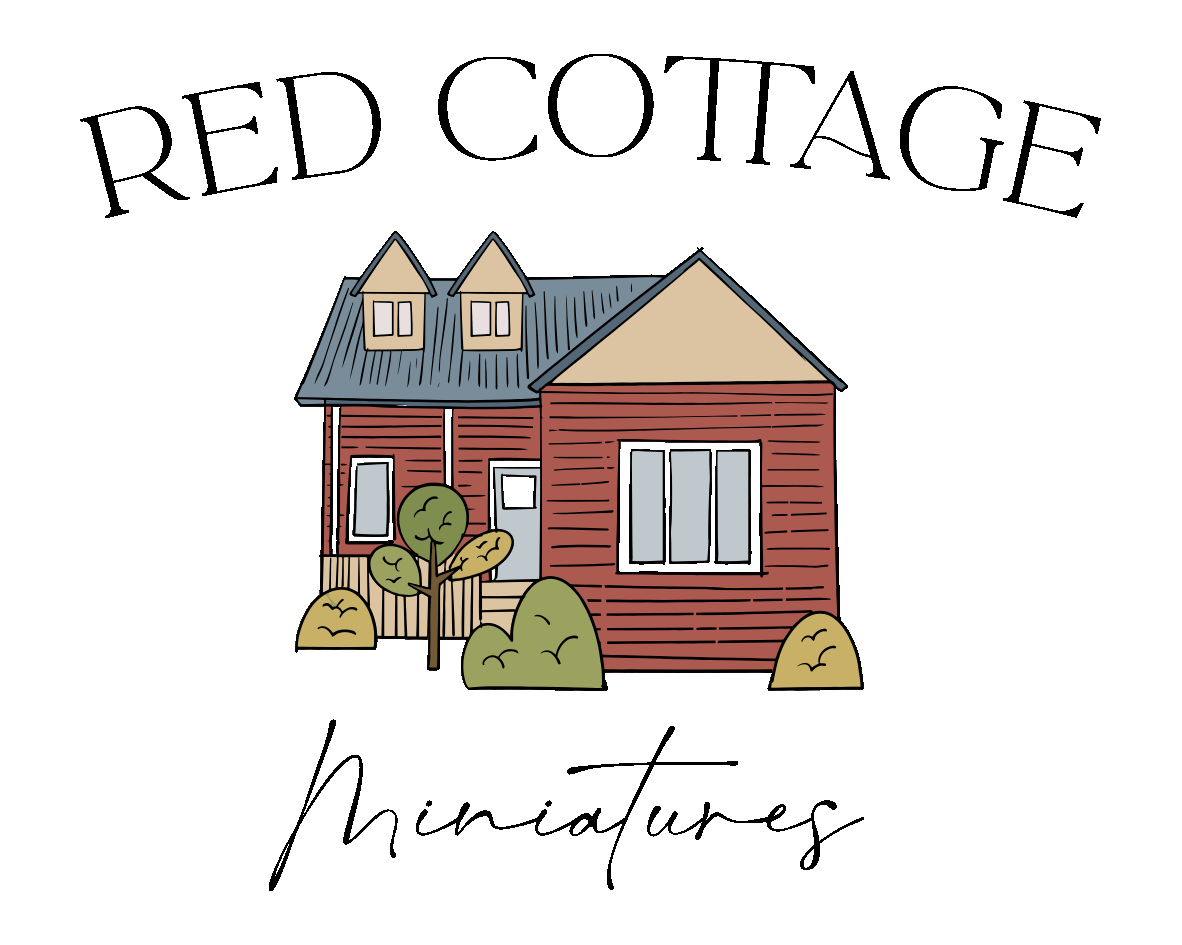Lighting your house using the string LED lights
The string lights are so cheap and it’s a great way to add some lighting to houses of all scales (well, probably not 1:144 or smaller!!), plus it comes with a battery pack. I was determined to play with a set to figure out a cheap and easy way to light mini houses as lighting can get VERY expensive. I made my own shades from paper and beads. I am no expert but figured if it worked for me, then it may work for you too. So here goes!
You will need:
One set of battery operated LED string lights (plus batteries)
Heat shrink tubes
Miniature electrical wire
Wire cutters
wire strippers or fingernails
Heat source (eg candle) and/or sandpaper (I used both)
Contrasting permanent marker or tape
Remember that LEDs will have a positive and negative wire. We will come back to this later. Before starting, switch you light set on to make sure all the bulbs work.
1) Cut your LEDs from the string leaving a length of at least 5cm of wires on one side. Trim the wires on the other side right up against the bulb. You will need to strip off the coating on the ends of the wire. I burnt them with a candle (poke the wire ends into the candle flame) and then sand with a fine sandpaper (photo 1).
2) Cut your string of lights off the battery pack after the thick cord starts, making sure you have a length of wire protruding (see photo 2). Mark one of the wires with your pen or tag with a little masking tape. Strip the protective coating off the ends of the wires as you did with your bulbs. You can now test your bulbs by turning your battery pack on and holding the wires of the bulb to the wires of the battery pack (photo 3). If the bulb does not illuminate, swap the wires around. If they still don’t work, try cleaning the wires a little more.
3) At this stage, you may want to make your light shade as you will be able to easily slide it over the wires of the bulb (photo 4). Once you have attached the bulb to the battery pack or add wire length, the join in the wires may make it very difficult to slide a shade over.
4) For each bulb, cut two short lengths of heat shrink tube about 1.5 - 2cm long. Also cut a length of the electrical wire your desired length. Consider where the light is to be located in the house and the distance to the battery pack. Separate the strands of the electrical wire at each end and strip off the coating for about 1.5cm (photo 5). Slide a heat shrink tube over each wire on one end (photo 6), wind the ends of your bulb firmly to the wires (photo 7) and melt the tube over the join (photo 8). Be careful not to melt the protective coating on the wires. Test the bulb on your battery pack again and mark or tag the wires to correspond with the battery pack mark.
5) If you wish to use multiple bulbs (eg for a chandelier), test the bulbs to determine and mark with pen or tape, twist all the unmarked wires together and all the marked wires together, then join them to one long wire (photo 9).
6) Your lights are now ready to install! Once you have them all in place, twist all the marked wires together, slide a heat shrink tube over, twist onto the marked wire of the battery pack and shrink the tube over the join. Repeat for the unmarked wires.
My battery pack holds two AA batteries and is 3V. This is noted on the tag attached to the string. You should be able to attach other 3V LEDs to the system, such as coloured LEDs for a fire, or when you need a much smaller bulb for a candle or other fitting.
Hope this little tutorial helps you! I’d love to see how you go if you try this yourself.









